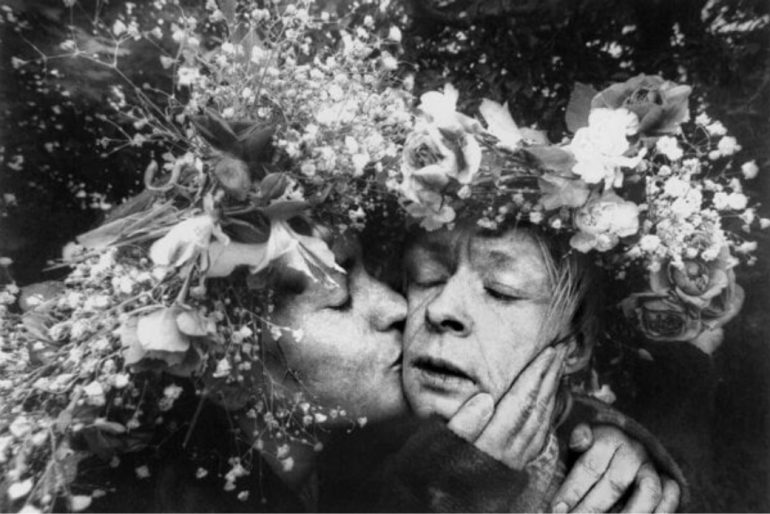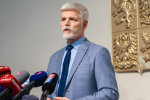The Month of Photography is the oldest and largest photography and visual arts festival in Slovakia, as well as the only one that is curatorially conceived. The festival traditionally focuses on global photography events, contemporary photography in the Central and Eastern European region, and photographic creation in Slovakia. What will the 34th Month of Photography bring?
For someone like me, who has been immersed in photography for over 35 years, November is a particularly special month. Bratislava transforms into a vast visual stage for the Month of Photography, now in its 34th edition. Living in Brno makes it incredibly convenient to visit Bratislava; it’s just an hour and a half from home. The city also offers a wonderful opportunity to enjoy a rich cultural weekend.
I remember it as if it were yesterday—the first time I attended the event in November 1996, where I discovered the work of the now-renowned Slovak photographer Tono Stano.
Since that day, 28 years have passed, yet photography remains one of the cornerstones of my culture, my knowledge, and my career as a filmmaker. After high school, before even entering university, my first professional training was at a prestigious photography school in Milan, a two-year program back when analog photography still reigned.
This year, with almost thirty exhibitions across the city and a rich, varied program, the festival seems truly designed to engage every level of photographic passion, from amateurs to professionals.
This year’s highlights include retrospectives on Martin Parr and Rudolf Koppitz, and I’m genuinely excited to revisit Parr’s work. He’s been one of my favorites for years, with a style that’s instantly recognizable. I’ve always admired his sharp, witty take on pop culture and his knack for uncovering meaning in the seemingly mundane. Parr has since grown to become one of the most influential and important voices in British photography.
I’m especially thrilled to see Parr’s work return to Bratislava; his talent for telling stories about everyday life with such wit and insight is endlessly inspiring. His photographs capture ordinary moments while revealing details that often go unnoticed. Parr has a gift for transforming the mundane into something extraordinary, weaving narratives that are both meaningful and infused with humor. This exhibition promises a deep look at his artistic growth and his unique perspective on the modern world.
Parr, a member of the Magnum group, has been fundamentally influencing the form of global documentary photography for over 50 years. Compared to the first presentation in Bratislava almost two decades ago, The Chronicler exhibition, held at the House of Art, offers a comprehensive overview of his work, from the black-and-white images of the 1970s to the commentary on the selfie trend of 2015.
Seeing these images is like traveling through time with him, discovering how the world—and we ourselves—have changed over the years.
Themes of This Edition: Natural Heritage and Mental Health
This edition of the festival explores two major, timely themes: natural heritage and mental health. The World Natural Heritage section focuses on biodiversity conservation and the urgent need to raise awareness of climate change.
Festival director Václav Macek has explained how crucial it is to preserve our natural environment, because without it, there can be no cultural heritage. This resonates deeply with me: over the years, I’ve learned that photography, especially landscape photography, has the power to evoke wonder and respect for nature. In this section, the works go beyond simply denouncing the consequences of the Anthropocene; they also celebrate nature as a source of awe and beauty, encouraging viewers to see the world with fresh eyes.
Among the featured artists, I’m particularly intrigued by Immortality of Trees by Beth Moon, who dedicates her work to trees and their majesty. Moon captures the silent, monumental beauty of trees, imbuing them with an almost mystical aura: her black-and-white shots look like hand-drawn art, and some of her landscapes have a dreamlike, suspended atmosphere.
Another exhibit I look forward to exploring is by Gerald Mansberger and Markus Eisl, whose aerial shots map landscapes from above, showing how human activity has reshaped nature’s face. Their perspective fascinates me: these images capture details invisible to the naked eye and convey a strong sense of our responsibility for the impact we have on the planet. Cássio Vasconcelos similarly adopts a critical view: his landscapes, scattered with remnants of human activity, are powerful reminders of our presence on Earth.
The Enter the Void section, dedicated to mental health, addresses an increasingly urgent issue. Works by Matúš Zajac, Max Kandhola, and Anders Petersen tell stories that delve deep beyond appearances, examining human vulnerability and the sense of isolation many feel. It’s a complex theme, and I think photography has a unique power to portray it: it can make the invisible felt, capturing pain, hope, or the intensity of a glance. Petersen’s photos, documenting life at a psychiatric hospital in Stockholm, are powerful precisely because they reveal the inner tensions of his subjects; he is an artist who manages to convey human emotions with incredible sensitivity. Zajac, meanwhile, in his series Distant Proximity explores the world of care homes, a subject that moves me for its delicacy: these images draw us into that world, its silences, and its fragility.
Innovation and the Avant-Garde: Kai Brüninghaus and AI Photography
Finally, this year’s festival also offers an innovative look at photography with Diffusionists by Kai Brüninghaus. His AI-created images are almost science fiction, inspired by the 1920s and filled with surrealism. The black-and-white photos seem to transport us to a different scientific era, as if we were observing old experiments through a distorted, mysterious lens.
For me, attending the Month of Photography in Bratislava is more than a pleasure: it’s a chance to rediscover the power of this medium and find fresh inspiration. The festival shows on again how photography can tell unique, diverse stories, precisely because each photographer brings a personal, unique perspective.
As Grzegorz Przyborek said, “I am convinced that photography creates a different reality, an image closer to our knowledge of reality, to a subjective vision.” And it’s precisely because of this ability to reinterpret the world that, for decades, my passion for photography has never waned.
The Month of Photography Festival, founded in 1991, is the largest and historically oldest national and internationally known festival and the only curatorial-conceived festival of photography and visual arts in Slovakia. See the festival website for more information and the festival and program.








